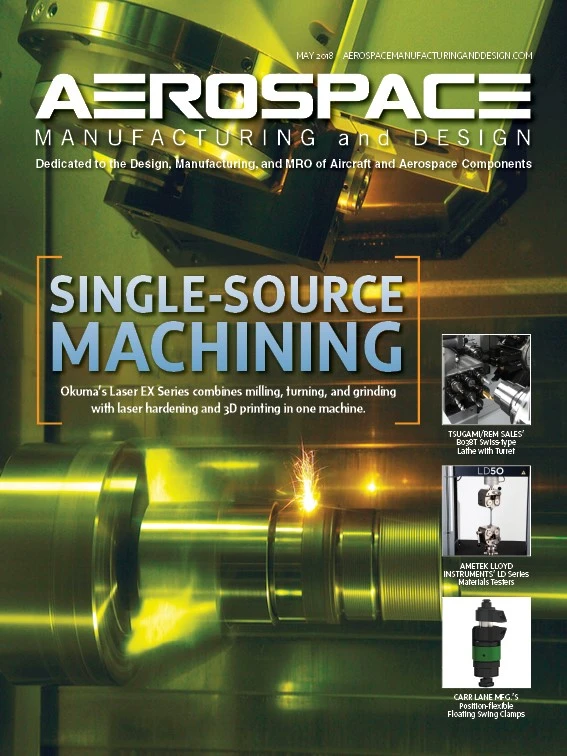
Throughout the aviation industry, jet engine vibration is an everyday concern. Maintenance, repair, and overhaul (MRO) crews worldwide are tasked with monitoring engine vibration to ensure flight safety and efficient service.
Overall gas turbine engine vibration, however, is the summation of contributions from various moving parts within the engine. To correlate vibration magnitude with specific engine components, maintenance engineers rely on vibration analysis and trim balancing tools.
Vibration analysis detects discrepancies in rotational machine dynamics while trim balancing is used to reduce vibration amplitudes of gas turbine shafts. Together, they help engineers ascertain and correct individual sources of vibration within an engine.
Vibration analysis, balancing

A modern turbine engine will typically contain two or three concentric shafts with compressors, fans, and turbines. These shafts – referred to as spools – are aerodynamically coupled, so each spool turns at a rate variable to its fellow spool. Consequently, each spool contains a speed pickup or tachometer so rotational velocity and the spool rotational angle can be known.
In addition, vibration sensors are affixed to one or more positions on the engine case, measuring the magnitude of physical shaking.
The PBS-4100 turbine vibration analyzer/balancing system gives users the ability to check the engine’s vibration amplitude and balance that engine if necessary. It does this with a series of
A series of configurable tracking filters correlates vibration to the spools. These specialized computer algorithms measure the rotational speed of a given spool and then filter the vibration content outside a narrow band of interest. The narrow band of interest is the characteristic frequency of vibration around each spool’s rotational speed.
By using the tracking filter for each speed, the contribution of vibration of each spool can be separated. As vibration varies with engine speed, measurement data is stored and presented in vibration-versus-speed trend plots.

Vibration surveys
In testing an engine, the operator will execute a vibration survey on the turbine engine – a slow cycling of engine speed from idle to maximum, then back down to idle again. As this occurs, the vibration analyzer will measure the vibration contribution from each of the spools and chart its findings on a series of plots. The overall vibration is also plotted.
The operator is warned if pre-defined limits of vibration are exceeded. By the end of the survey, the vibration profile is summarized for comparison against original equipment manufacturer (OEM) recommendations. If the vibration of any given spool exceeds an allowable limit, it is possible to add offset weights to bring the spool into balance, similar to the addition of lead weights by an auto mechanic onto an imbalanced tire.
Because the vibration magnitude and the angular position are known on the spool, a solution may be calculated with a variety of techniques using the algorithms within the vibration analyzer. Such a solution would add one or more precisely defined weights onto designated locations/angular positions on the spool.
Signal conditioning
For some aircraft engine MRO situations, vibration data
With the signal conditioning unit, users can test engines with a long-tooth or short-tooth embedded N1 signal; engines with older high-voltage tachometer generators; or engines with offset tooth design

Streamlining tests
Early analysis of turbine vibration can identify problems quickly, saving the time and cost of engine removal. Implementing such troubleshooting techniques, however, can prove difficult. Mechanical constraints under the engine cowls and the complex design of aircraft wiring harnesses can make the installation of accelerometers, charge amplifiers, and cables a time
A portable vibration analysis and engine trim balance instrument, such as MTI’s PBS-4100+, connects directly to the engine’s built-in sensors to read necessary signals. Coupled with aircraft-specific accessory kits, the unit simplifies jet engine balancing and vibration testing.
As with the larger test cell version, the portable instrument employs a series of
MTI Instruments Inc.
www.mtiinstruments.com
Get curated news on YOUR industry.
Enter your email to receive our newsletters.
Explore the May 2018 Issue
Check out more from this issue and find your next story to read.
Latest from Aerospace Manufacturing and Design
- Heart Aerospace relocates to Los Angeles
- Fixtureworks introduces Stablelock Clamps
- Piasecki acquires Kaman's KARGO UAV program
- PI Americas’ long-travel XY piezo nanopositioners-scanners
- AAMI project call submission deadline extended to May 12
- Jergens launches cast iron tooling column additions
- Airbus to acquire assets relating to its aircraft production from Spirit AeroSystems
- FANUC America's Cobot and Go web tool







